I received lots of reader photos while I was going on and on about hotel doors. Here they are!
From Mark Lineberger of Valley Doors & Hardware, a view of a bottom latch that most people never see. I wonder how many bottom latches on rated doors are actually able to engage in the strike. Not this one!
From John Sojka of Ingersoll Rand Security Technologies of New England (my office!), two different ends of the spectrum of “Why?”:
From John Gant, another of my coworkers at Ingersoll Rand Security Technologies of New England, who cleaned out his folder of odd-ball applications and finally sent them along:
From Gary Bambara of Vulcan Lock, a creative application that I haven’t seen before:
From Andy Olson of Reliable Glass and Door, who sees some really interesting stuff in his travels, even if his destinations sometimes scare me:
And finally, from Brendan Daley of SURV, whose poor wife had to start off her New Year’s Eve dinner by distracting the host while Brendan took this photo (I’m embellishing):
Thanks everyone!!
You need to login or register to bookmark/favorite this content.

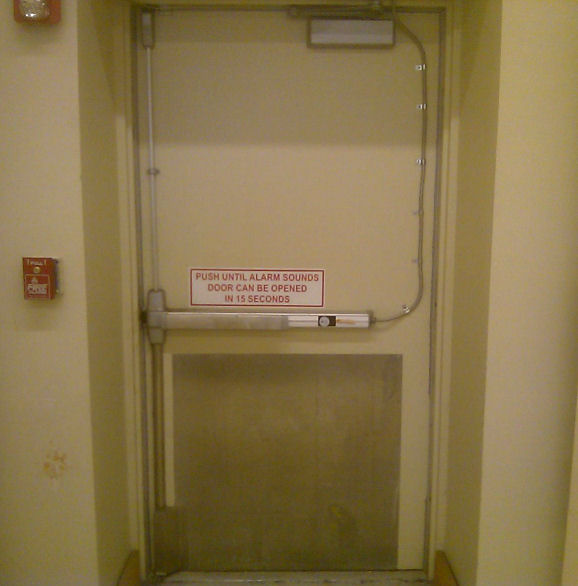
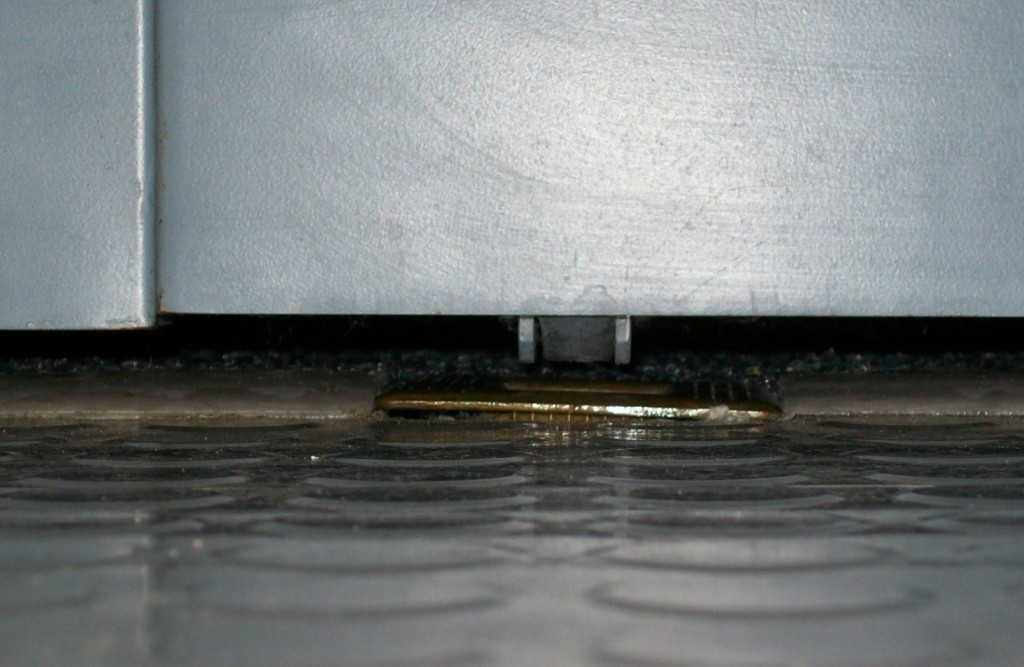
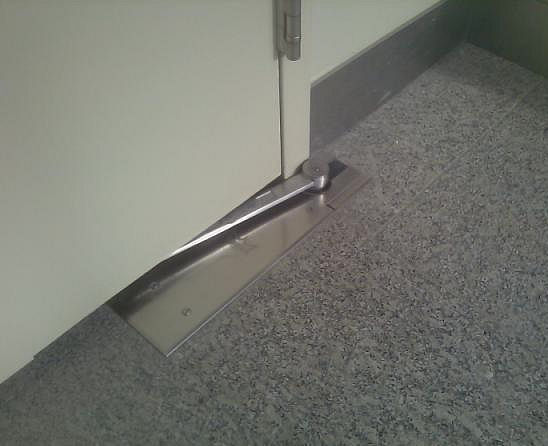
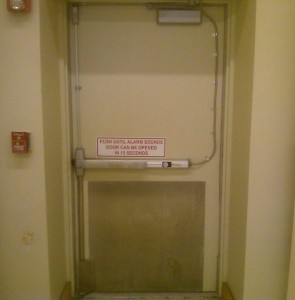

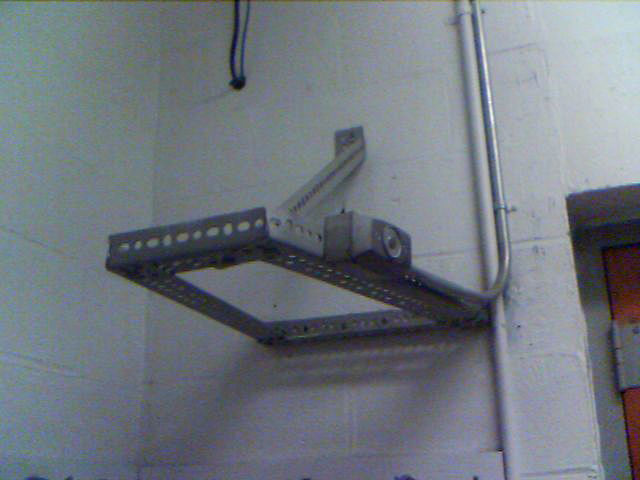
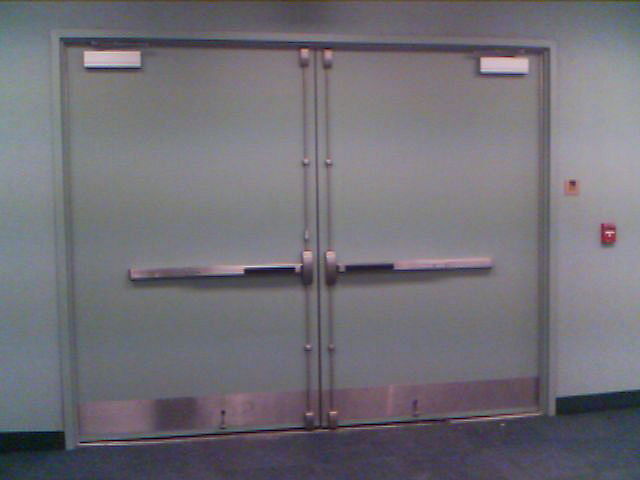
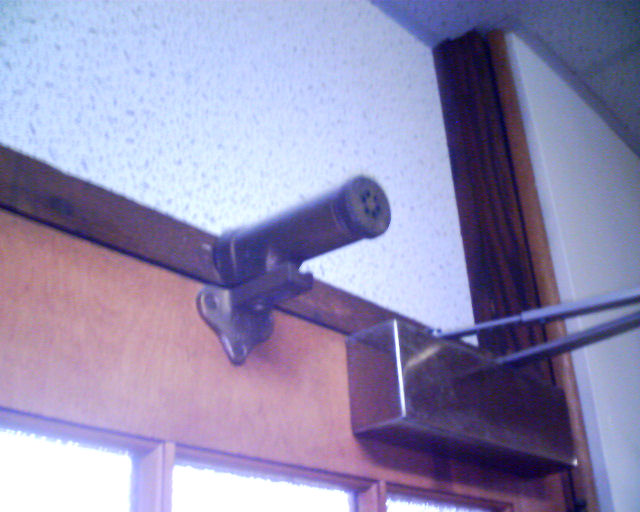
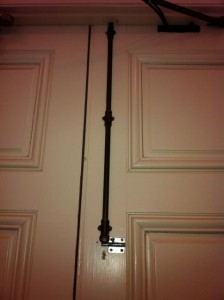

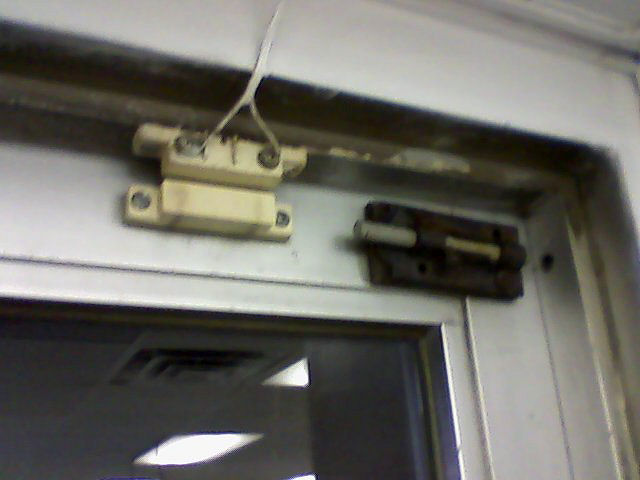
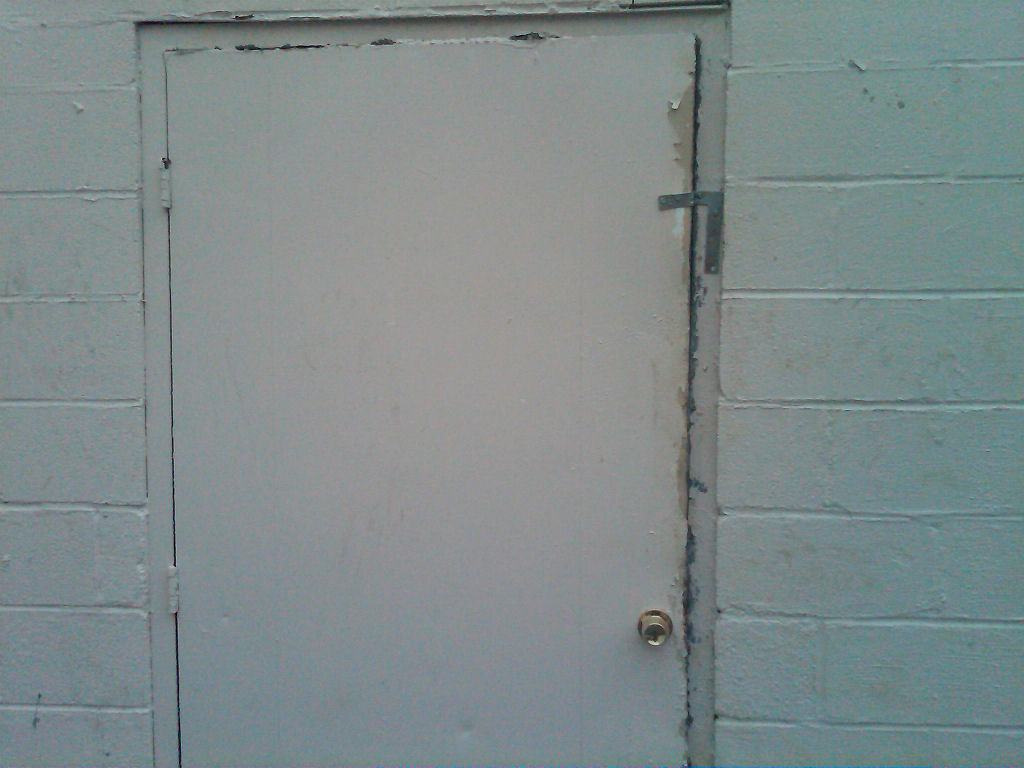
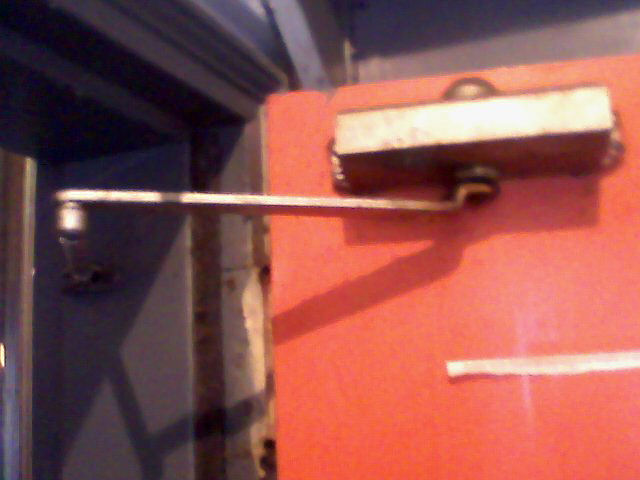
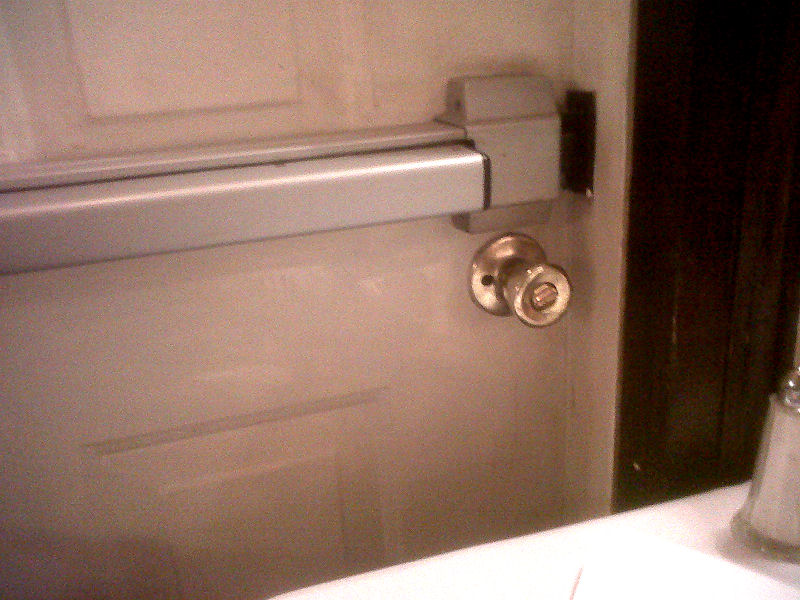




good morning Lori,
some really interesting photos here,
first picture (strike) that door seems a little too high doesn’t it??
[Lori] Yes, the door undercut is too large, which is a really common problem. The strike can’t be raised because it becomes a tripping hazard.
second group from john sojka: i know it may look weird to see a floor closer with an ARM, but this is one of 3 different ways a floor closer can be mounted, this style of mounting is called INDEPENDENT HUNG floor closer (closer does NOT bear any weight of the door, and can be used with regular 5 knuckle hinges (butt hinges)me, when i see the pivot of closer under the door or on push side, i fear i may step on it (that would not be good for either person or the closer) this application is VERY common in Germany, train stations especially near Stuttgart.
[Lori] I know this is what happens when a floor closer is used on a door with butt hinges but I doubt that the architect expected it to look like this. I think the applications for this set-up are very limited.
3rd group (hinge pin, at first i thought you found one of them hinge pin door closer thingies sold in hardware stores, then realized it’s a Phillips head SCREWDRIVER. well least owner will never forget were he put the screwdriver!
[Lori] I think I may start doing this at home…I’m always losing stuff.
wide doors: is this one on a car dealership or warehouse??? possible they are this wide to accommodate really large items or cars (by opening one door perhaps??)
[Lori] I don’t think it was a car dealership but it was definitely a place that required wide doors. Typically if a really wide door is required, it’s not used as an egress door and it wouldn’t have panic hardware.
snugger: FINALLY, great to see your snugger installed on the door and still in use!!! although its use is practically obsolete (unless you let closer’s latch valves slam the door to see how well the snugger actually works) the closer that your snugger is installed next to, is that stainless steel version, I ask because of the shiny metal cover. is this one on your office door or at hour home??
[Lori] This is a photo from the school where it was originally installed. I think the closer just has a plated metal cover. I don’t have any closers on my doors at home yet. 🙂
top bolt and slide latch, i know the latch thing is suppose to be used on a GATE but seems to me that the owner could not maybe keep it to stay up so they use the slide lock bolt to hold it up.
[Lori] Yes, that’s why they did it.
closer with arm on side jamb, i have seen a photo of this type of application (I don’t recommend this way, closer does not have enough leverage to pull the door shut) I guess this is what happens when one too many people are too used to the door closers on their screen doors in their own homes, and when installing/repairing a commercial type, they think it will work the same way, which will not because an arm type closer works a lot differently then the direct action linear motion of the screen door type of closers.
[Lori] It’s hard to know why people do these things, but maybe the reveal was too deep to mount it top jamb and they didn’t have a PA shoe so they got creative.
panic bar and doorknob, seems with this one, as with any hardware photography, gotta be sneaky and do it when nobody is looking. great distraction method used by Brendan’s wife on the host
[Lori] I’m the queen of sneaky, although my son calls me the Queen of Mean.
-Jess
hello again Lori, about independently hung floor closers, they can be positioned on push side or pull side (this one above is on pull side,) push side install will have the arm and slider hidden under the bottom edge of the door and will only be seen when door is opened.
jamb mounted arm closer: with a PA shoe it can still go on that door, high school i went to had deep reveals like that, advantage was no need for the little spacer block for the 5th hole when installing LCN CUSH arms. another alternative to this could be that owner could put it on pull side, unless this is an exit door, then its best closer stays on push side (im sure he can find a PA bracket (sometimes ebay, or better yet, the company that made the closer)
as for your snugger, last night I was looking at ebay and seen an antique closer (like those LCN’s at the trinity church) …………..yet again, missed the auction or outbid. ahh I guess I’ll wait ’til it’s relisted or the new owner wants to pass it on. when you get your snugger, keeping it at office or taking it home??
about being queen of sneaky, ohh, should have been on the train with me when I was going to the grand re-opening of Nintendo world store at Rockefeller center, LOL think your bad, I already had about 5+ door photos snapped (floor and surface closers seen from the train at the terminals, and unique wood doors, before the woman I went with said “easy there shutterbug, were going to be on the train for at least an hour, at least save some battery power for NYC” only closer pictures that stayed were one floorcloser (NBC news main entry dooractually was an accidential shot, meant to take a pic of the HANDLE not the floorcloser, shaky hand caused me to snap photo of FLOORCLOSER instead :D) and one traditional door closer on a glass door (of a dentist office located next to a pizza shop, that one, easy as pie to get away with, was just taking pictures of the unusual things, when do you ever see a pizza shop next to a dentist??……..only in NYC!
nothing was wrong with my batteries but I did learn something that day………. check memory card BEFORE going, at least half the door pics I took that day, lost forever, the card I used was from a GPS unit (Magellan and the POI’s and pictures from my dad’s PC screensaver were stored on it, so I had no idea how many pictures I had left to take or how much card space was available or used……..lesson learned.
kids will be kids, but later in life he will iron out and be nicer, hope kidzilla is doing well,
-Jess the doordoctor
I had a quick question on an Omnia Lock that needs a fire rated latch.
We are using the Omnia # 25 Passage Latch – that has a heavy handle.
We tried using a Yale U.L. latch and the spring inside couldn’t hold the lever in the centered position. The lever is sagging.
Do you have any suggestions on a latch that will work?
Hi JP –
As far as I know, you can’t mix and match parts on a UL assembly. If you need a UL listed latch, you need a UL listed lock. You may be able to find a UL listed lock that will allow you to use someone else’s lever handles only, or another manufacturer that offers a UL listed lock with levers similar to the Omnia.
– Lori